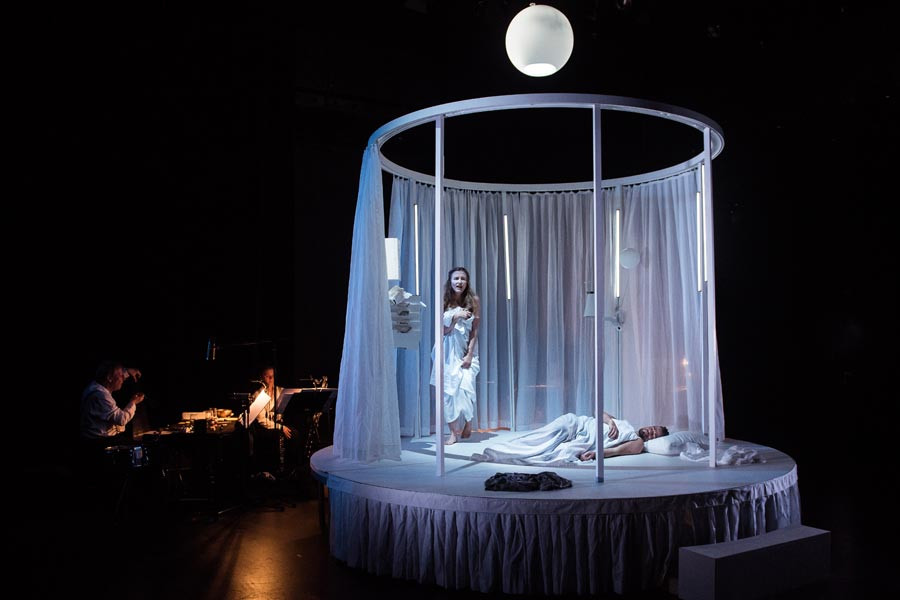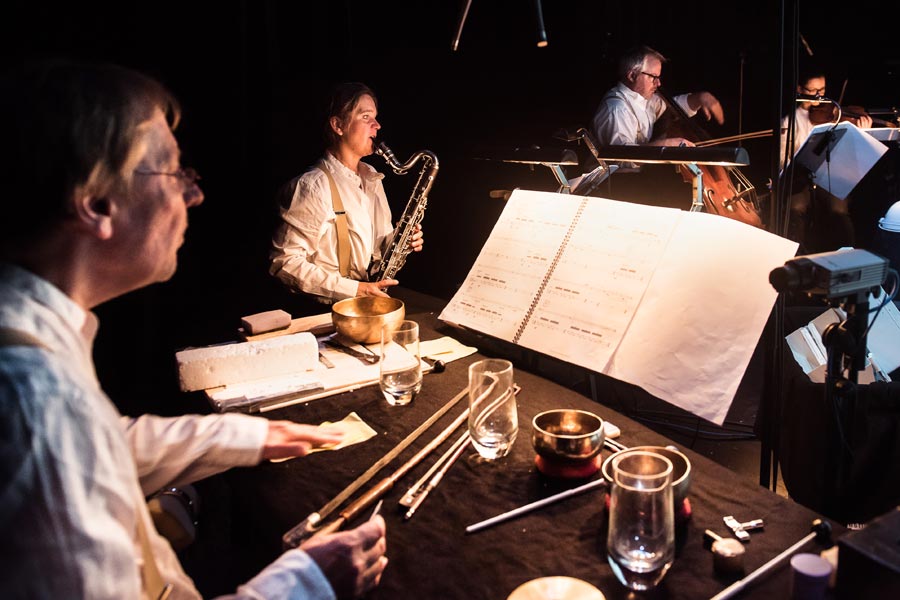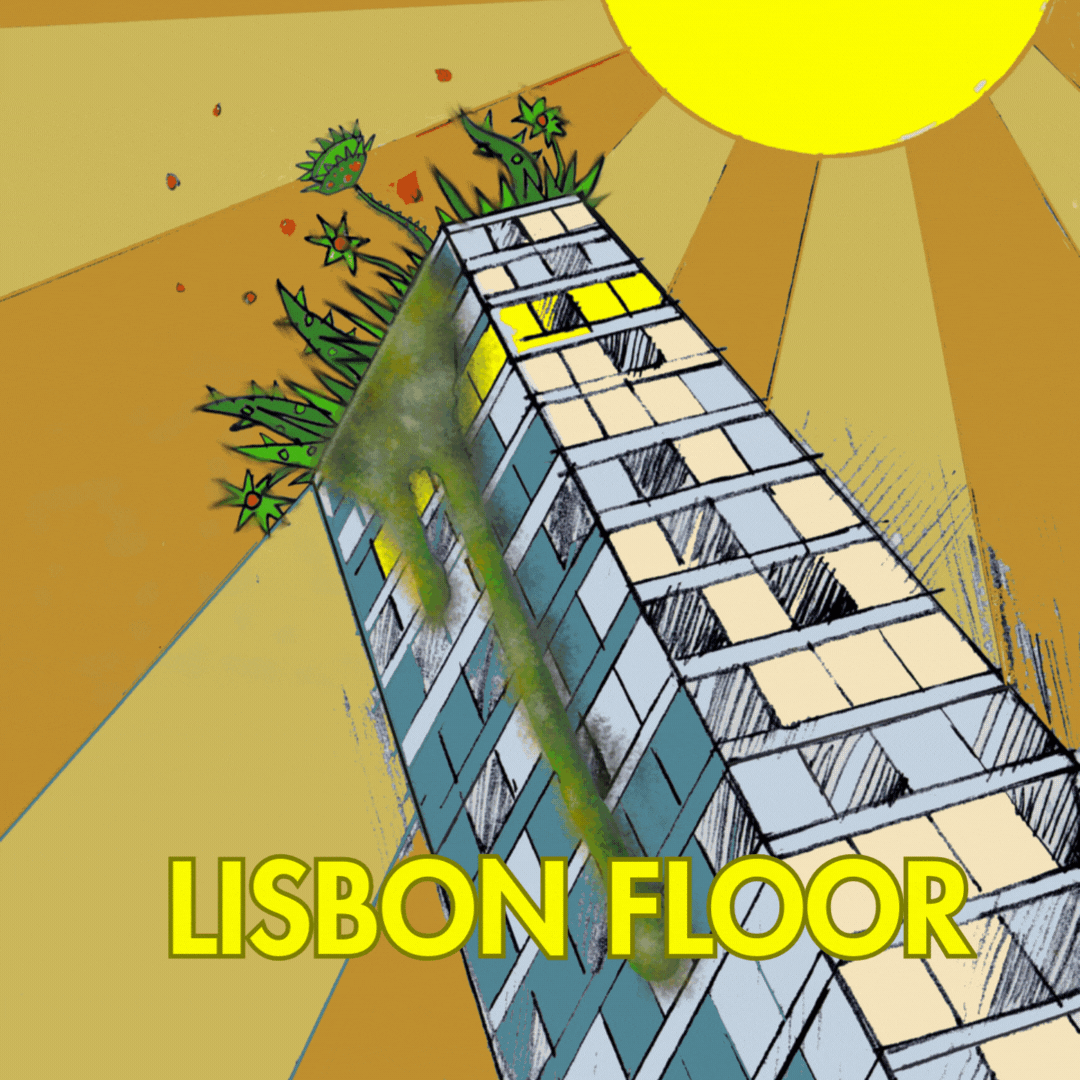
Downfall – A journey to the underworld and back again
Typical. You go to serious trouble rescuing your beloved from the underworld – not looking back over your shoulder at her once, just as Hades commanded – only for life above ground to get so cripplingly dysfunctional that you have to break up with her anyway.
Hot on the heels of Louise Alenius’s Silent Zone seen at Copenhagen Opera Festival in August, here we have another new Danish opera on the theme of crumbling love and family breakdown. Downfall (da. 'Nedstigning – Underverdenen tur-retur' ) with music by Nicolai Worsaae to a libretto by Julie Maj Jakobsen takes a fresh look at the legend of Orpheus’s journey to the underworld and asks the question that thousands of pubescent males asked when studying it at school: was Euridice really worth it?
It wrestles the position of decision-making privilege away from the man
Actually, Downfall flips that question around. It contrives an operatic and indeed a twenty-first century response, in narrative terms, not only to the legend itself but also to a handful of great operas of the canon including Don Giovanni and Tosca. Specifically, it wrestles the position of decision-making privilege away from the man so that the power-couple have to deal with the complications of an actual shared life together (always a problem with those ‘love at first sight’ relationships). Orpheus’s act of heroism, in which he succeeds, was the easy bit.
 Anna Klett (clarinet) and Frans Hansen (percussion) of the Figure Ensemble. Photo: Søren Meisner
Anna Klett (clarinet) and Frans Hansen (percussion) of the Figure Ensemble. Photo: Søren Meisner
This new narrative, though it appears flippant at first, takes aim at a whole bunch of operatic and mythological orthodoxies including the allure and power of performance and the sustainability of relationships forged in the white heat of passion. In the cold light of day, despite a successful singing career (his) and a shiny new ice-white coffee machine (hers), the Orpheus and Euridice of Downfall just can’t make it work in the land of the living and it’s the latter character who has the intelligence to face the fact. When we sit down to watch Puccini’s La fanciulla del West in the very same building in a few months time, will those of us who saw Downfall be shaking our heads at the final curtain, convinced that Minnie and Dick’s happiness won’t last once the realities of laundry and caravan holidays set in?
The Orpheus and Euridice of Downfall just can’t make it work in the land of the living and it’s the latter character who has the intelligence to face the fact
Probably not, because opera should exercise such an instantaneous and overriding grip on our senses that we are forbidden from making any such realist forecasts. It always has, from L’Orfeo to Written on Skin. Silent Zone wielded horrifying sexual abuse as a theatrical tool and appropriately so. Richard Strauss’s Intermezzo manages to mine small domestic quarrels for big operatic meaning, but in that opera Strauss laid a carpet of fortitudinous love under his faintly ridiculous characters that sets the piece off. Downfall is an effective enough micro-drama of psychology, but without a score ridden with tension it is difficult to come to terms with as a piece of music theatre.
That is partly down to Worsaae’s careful and compartmentalized treatment of his constituent musical parts. Yes, we hear the odd narrative signpost from the band, an ominous clarinet siren here or frenzy there. From Frans Hansen’s desk of percussive playthings we can sense the scrapes and scratches of the mind. But only now and then, and the effect is soon dimmed by overfamiliarity.
Otherwise, the five-strong Figura Ensemble most tangibly locks into meticulous four-in-a-bar ostinatos that maintain a degree of neutrality against the railing voices of the protagonists. Sometimes, those ostinatos take on a lilting groove that suggests happy families when the stage is depicting the opposite. That might be the point. On one occasion, as the rot sets in to the couple’s post-trauma life together, we sense that groove falling away; the aural lighting shifts and the ostinato becomes an inexorable downward pathway into the abyss. Considering the full musical apparatus Worsaae has at his disposal, in operatic terms that is Downfall’s highlight and it comes and goes pretty early on.
The five-strong Figura Ensemble most tangibly locks into meticulous four-in-a-bar ostinatos that maintain a degree of neutrality against the railing voices of the protagonists
But in Worsaae’s mind, the focus of the drama clearly rests on the voices of the protagonists. Whether or not that fatally scuppers the piece’s operatic credentials is a matter of opnion. But the vocal writing is clear and inventive and Worsaae’s setting of Jakobsen’s text renders it consistently decipherable. Less successful in this instance is the inclusion of speech, particularly as Teit Kanstrup’s (Orpheus) speaking voice rests on such a markedly different plane to his singing voice and the shift between the two is clunky (he is clearly more comfortably singing than speaking, hence his profession).
Opposite Kanstrup’s Orpheus, Nana Bugge Rasmussen’s Euridice has more presence – both physically (she rarely leaves the stage) and vocally. But that is an astute theatrical device from both Kanstrup and Worsaae. Orpheus, the singer, is losing his grip – increasingly prone to meaningless, insensitive bluster (he sings like an X-Factor finalist, from the front rows of the audience, at the height of his delusion) while Euridice maintains enough vocal subtlety and elasticity to peer into the soul and influence others. She seems far more able than Orpheus to manipulate the instrumental and electronic sounds, as when she first has thoughts of the snake with which she will conspire to die.
 Nana Bugge Rasmussen (mezzo-soprano) and Figura Ensemble on stage. Photo: Søren Meisner
Nana Bugge Rasmussen (mezzo-soprano) and Figura Ensemble on stage. Photo: Søren Meisner
At that point, we get a glimpse of what Worsaae can do with noise and has done in other pieces: a reeling effect spins out behind Euridice’s voice that is neither beast nor machine and is all the more chilling for it. In a brief interlude, instrumentalists step out from behind the elegant circular stage and play single notes, staggered, in the manner of human exhalations.
But as beautiful as that moment is, it doesn’t serve the right dramatic purpose at moment when intense tragedy is looming. In the actual recorded sounds of human inhalation and exhalation that open and close the opera, we hear far more of the essence of this sorry story. We hear the tension, the fragility, the desperation and the tragedy that is missing from too much of Downfall’s written instrumental music but is present in its refreshing and fascinating dramaturgy. In operatic terms, it’s hard not to consider that a failure.

